Fresh leeks are a delicious addition to so many dishes - but first, you need to know how to prep them! This quick tutorial will show you exactly how to slice and wash raw leeks for all your favorite recipes.
If you're new to cooking with leeks, never fear! While these large vegetables can feel a bit intimidating, they're actually deceptively easy to prep.
Leeks are members of the onion family, and look like bigger, thicker scallions (aka green onions). They have a light onion-y flavor (like a milder version of a shallot) and, when cooked properly, have a buttery, almost melt-in-your-mouth texture.
In this post, you'll learn how to cut and clean leeks. I love doing this as part of my meal prep routine: Slice and clean the fresh leeks, then store in the fridge for soup recipes, pastas, and more throughout the week!
Jump to:
Trim off the Ends

Start by trimming each end of the leek: Take most of the leathery, dry, dark green pieces off the top (Image 2, above), and cut the root off the bottom, leaving as much of the white stalk behind as you can (Image 3). You'll be left with the short, centermost piece of the vegetable.
Pro Tip: Discard or compost the root end of the leek; if you like, you can wash the tougher, dark green leaves and save them for homemade stock or parmesan broth.
How Much Green Should I Trim Off My Leeks?
Some recipes suggest trimming the ENTIRE dark green portion from leeks, leaving only the white and lightest green pieces. But I generally prefer to use a bit more of the vegetable (why waste something if we don't have to, right?)
The dark greens of a leek are perfectly edible, but are often discarded because they're tougher and more bitter than the lighter, more tender pieces. Exactly how much of the green portion you trim off will depend on personal preference, as well as how you're planning to use the prepped leeks:

I typically like to leave 1-2" of dark green at the top when I trim my leeks. This lets me take advantage of their slightly bitter, complex flavor and gorgeous color while still avoiding the ultra-tough, dry, leathery pieces at the very top.
When I'm making a leek recipe with a long cook time or a blending step (like our potato leek soup!) I'll often leave a bit more of the dark green. If I'm making something more elegant (like a frittata with leeks, for example, or a delicate pasta dish that I want to feel really buttery and decadent), I'll compost all of those dark green pieces and use just the white portion.
All that to say: Trim your leeks however you want! If you prefer the softer, more delicate white and light green parts of a leek, trim all the dark green pieces away. If you like the hearty texture and slightly more bitter flavor of the dark green pieces, keep them all in the mix! It's entirely up to you.
Slice into Half-Moon Pieces
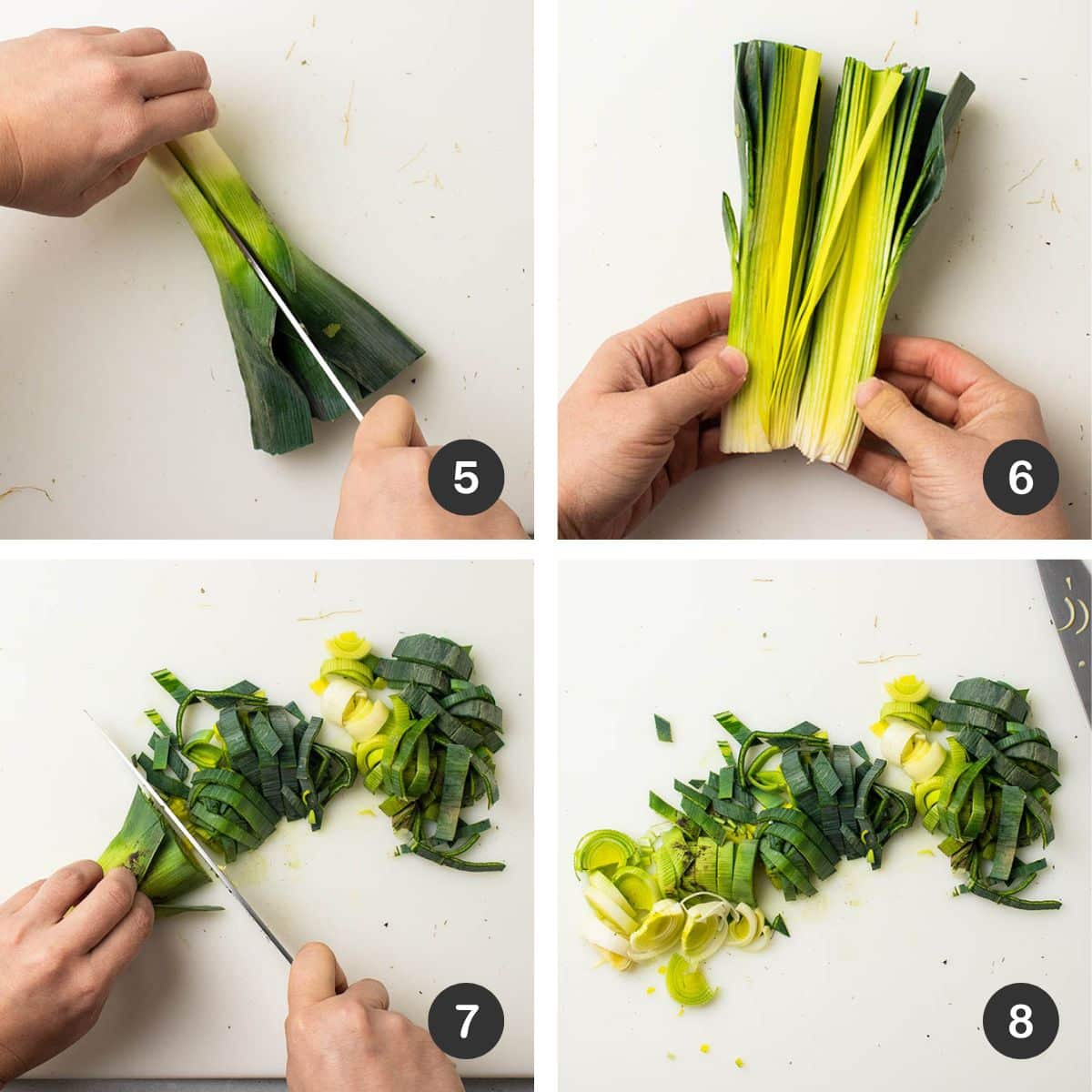
When your leek is trimmed, slice it in half lengthwise (Image 5, above). Separate the halves (Image 6) and place them flat-side down on a cutting board, then use a sharp chef's knife to slice each leek half into half-moon pieces (Images 7, 8).
Wash the Leek Slices
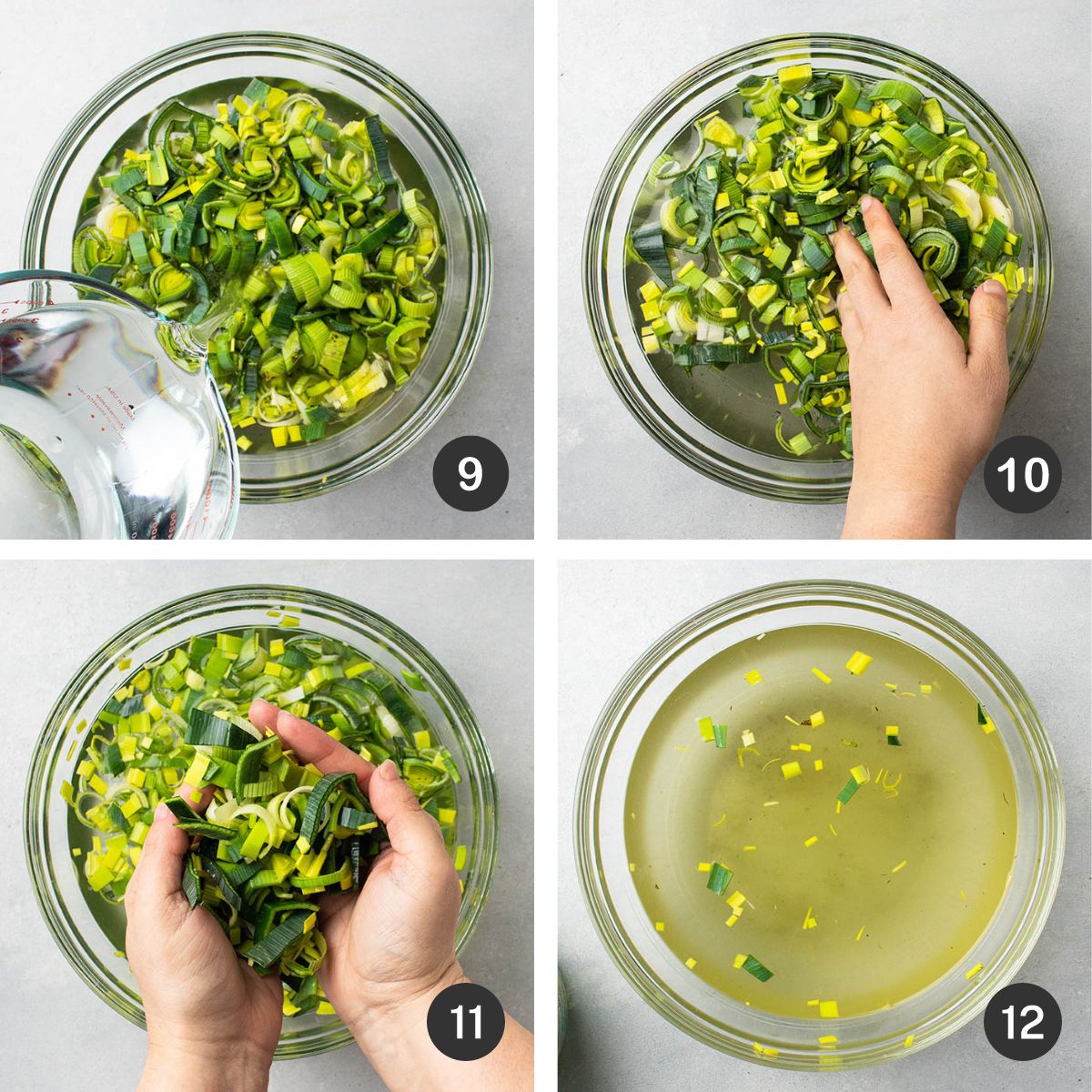
Transfer your leek slices to a large bowl and cover them with cold water (Image 9, above). Using clean hands, give them a good stir to shake all of the sand and dirt loose (Image 10).
Use your hands or a slotted spoon to gently lift the leeks out of the water (Image 11), letting the dirt and sediment fall to the bottom of the bowl (Image 12).
Pro Tip: Drain your leeks by lifting them out of the bowl of water (as opposed to pouring the bowl's contents through a colander, which just pours all that sand and dirt right back over the leeks!)

Leeks grow in very sandy soil, which means they typically release quite a bit of grit! Don't be concerned if the water in your bowl after that first wash looks, well, dirty.
Once you've drained the cut leeks, discard the dirty water and repeat the process until the leftover water stays clear. I typically need to wash leeks twice with this method (if they've come from the farmers' market or a CSA box, they may even need a third wash).
Pro Tip: If you have a salad spinner with a colander insert, you can use that instead of the bowl method! Fill the spinner bowl with water, place the leeks in the colander to swish them around, and lift the entire colander out of the water to leave behind any dirt. Discard the water and spin the leek pieces to dry them!
How to Store Cut Leeks
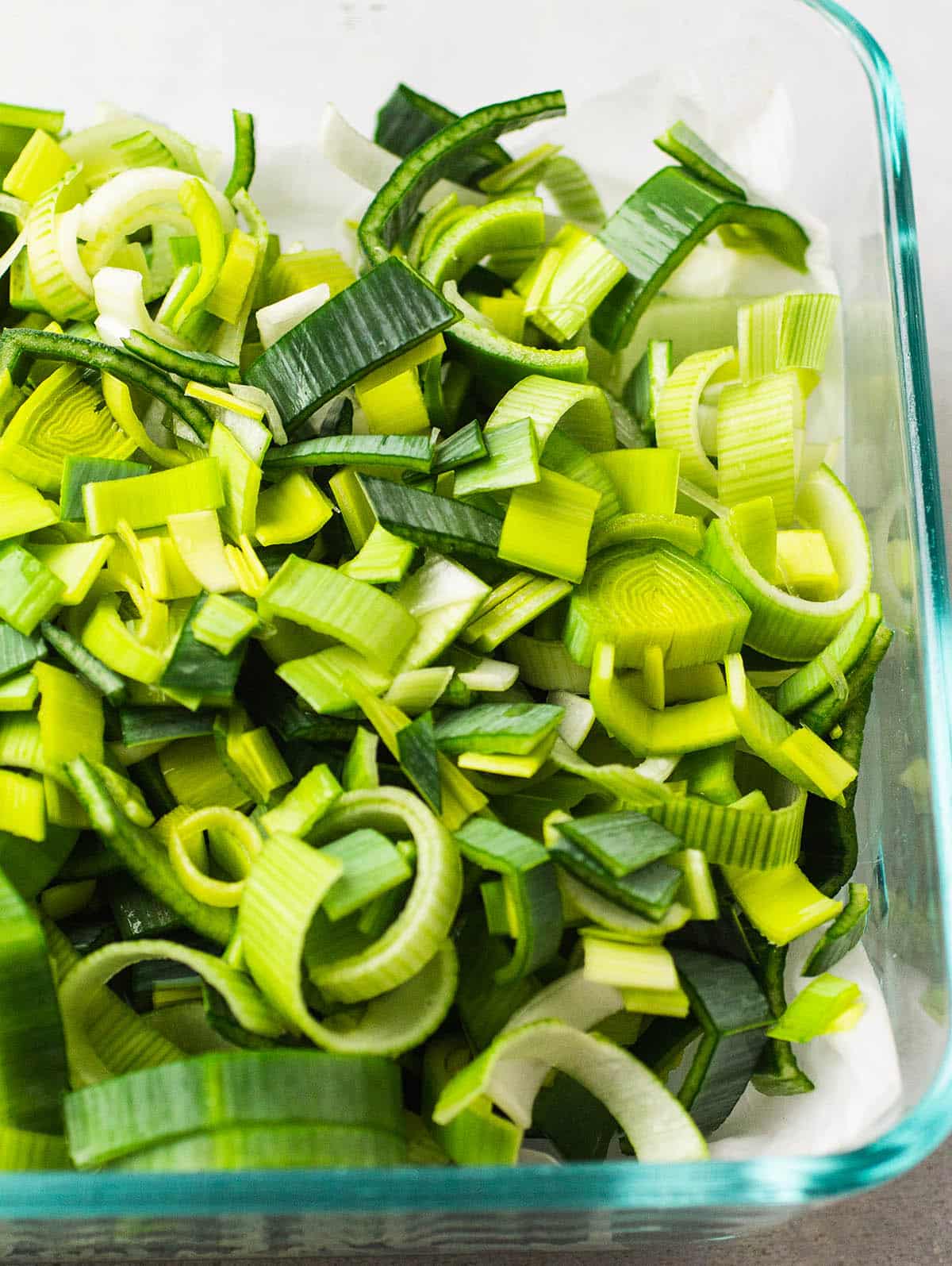
When your leeks are sliced and cleaned, shake off any water (or use a salad spinner to dry them) and transfer them to an airtight container lined with a paper towel or napkin.

The paper towel will absorb excess water and pull it away from the leeks, which helps them stay fresh and crisp. If the paper towel is soaked through after a day or two in the fridge, you may want to replace it to keep the leeks fresher longer.
Store leeks in the refrigerator for up to a week (although they'll often last even longer!)
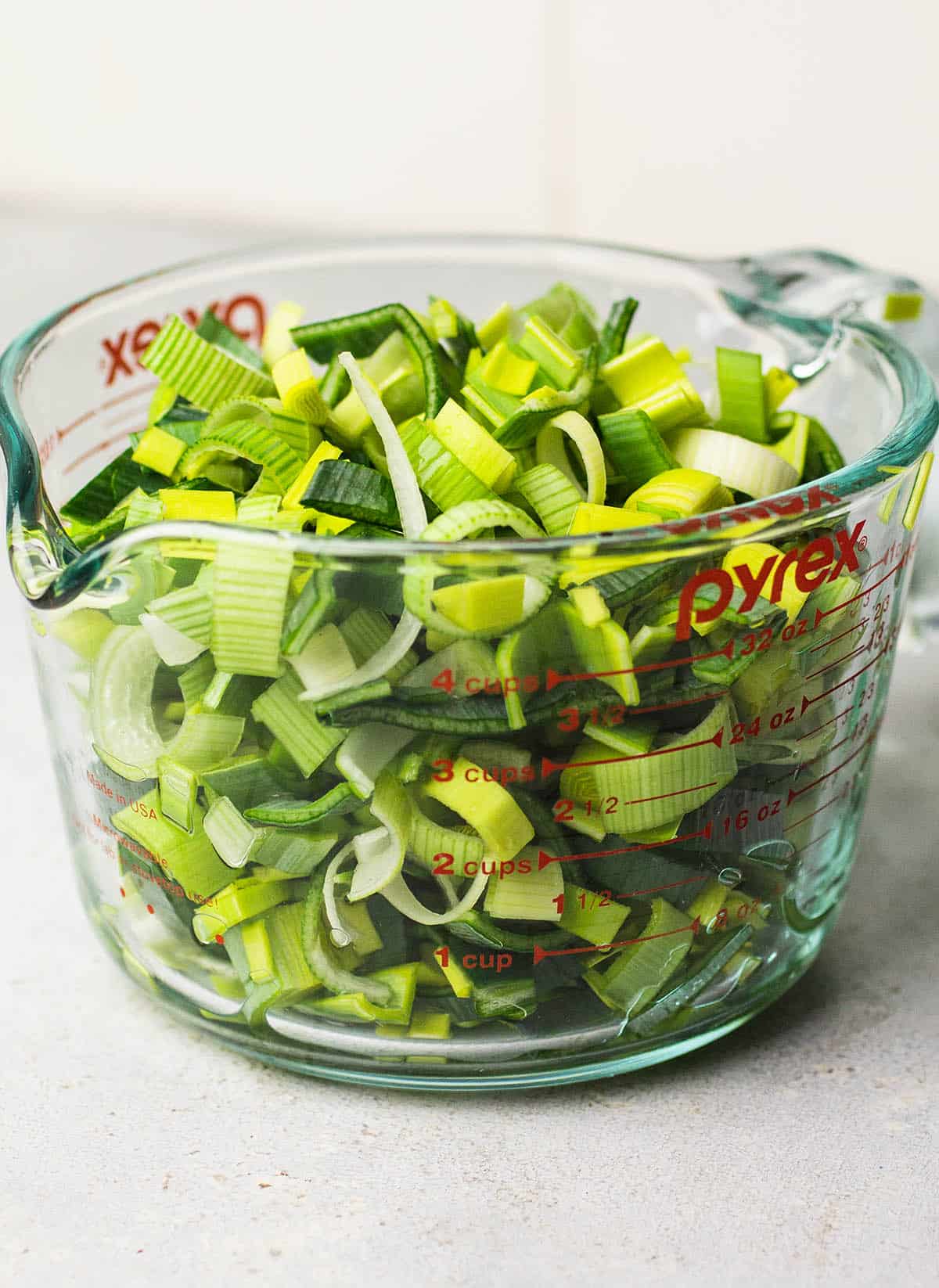
Frequently Asked Questions
While they're perfectly edible, the dark green part of a leek is typically tougher, chewier, and more bitter than the lighter green and white pieces of the vegetable. Eating them (or not) is really a matter of personal preference!
I recommend trimming off at least half of the uppermost dark green leek pieces: At the very top, they're pretty leathery and just not that tasty. But the lowest inch or two of dark green pieces - right where the dark green meets the white portion of the vegetable - are much more tender and easier to cook with!
If you don't want the tougher texture but want to reduce food waste, you can also save any dark green leaf tops for homemade turkey stock or parmesan stock.
If I'm making something with a long cook time (like some oven braised short ribs) or with a blending step (like this leek and potato soup), I'll leave a few inches of the dark green layers at the top of the leek. I like the more complex flavor those pieces bring, and they'll be sufficiently broken down during the cooking process.
If I'm cooking leeks for something more delicate - like a creamy pasta sauce, a leek frittata, or some leek breakfast hash - I'll often trim away more of the green pieces and use just the white portion of the vegetable. I'll also use just the white and lightest green pieces of a leek if I'm roasting them for something (they cook more evenly that way!)
But the question of "how much green to leave" when you cut and clean leeks is really a matter of personal preference: So if you like the darker pieces, leave them - and if you don't, trim them off!
Leeks grow in very sandy soil: They collect a lot of dirt and grit both on their roots and throughout their interior layers! Rinsing leeks well is essential to make sure you remove all of that grit and buildup from every part of the leek.
We don't recommend freezing raw leeks, as it can alter their texture once defrosted. You can freeze cooked leeks, though: sauté sliced leeks in a large skillet over medium-high heat with a bit of butter or olive oil, salt, and pepper, then let cool and store in an airtight container in the fridge for up to 3 months. Defrost in the fridge overnight, then add to your favorite recipes!
Our Favorite Leek Recipes
Did you try this technique? Leave a comment and star rating below to let us know how it turned out!
Print📖 Recipe

How to Cut and Clean Leeks
- Prep Time: 5 minutes
- Cook Time: 0 minutes
- Total Time: 5 minutes
- Yield: About 3 cups 1x
- Category: Meal Prep
- Cuisine: American
- Diet: Vegan
Description
Wash and trim fresh leeks for your favorite leek recipes!
Ingredients
- 1 large leek
- 1 large bowl of cold water
Instructions
- Trim the root and the dark green tops off each leek.
- Slice the leek in half lengthwise. Place it flat-side-down on a cutting board, then slice into half-moon shapes.
- Transfer leek slices to a large bowl filled with cold water. Stir the leeks a bit to release any grit, then lift them out of the water, leaving behind any sediment. Repeat with clean water until no dirt remains.
- Transfer leeks to a food storage container lined with a paper towel. Cover with an airtight lid and store in the fridge for up to a week.
Notes
How much green should I trim off my leeks? If you're using leeks in recipes with a longer cook time - like a potato leek soup, stews, braises, or stocks (we love leeks in our parmesan broth!) - you can leave a few inches of the dark green pieces at the top, right where the white part meets the darker green area. If you're cooking something more delicate - like a leek hash, sautéed veggies, or anything in a light sauce - we recommend trimming off all of the darkest green pieces and using only the white and lightest green parts of the plant.
Nutrition
- Serving Size: 1 leek
- Calories: 54
- Sugar: 3.5 g
- Sodium: 17.8 mg
- Fat: 0.3 g
- Carbohydrates: 12.6 g
- Protein: 1.3 g
- Cholesterol: 0 mg
Keywords: meal prep, meal planning, chopping







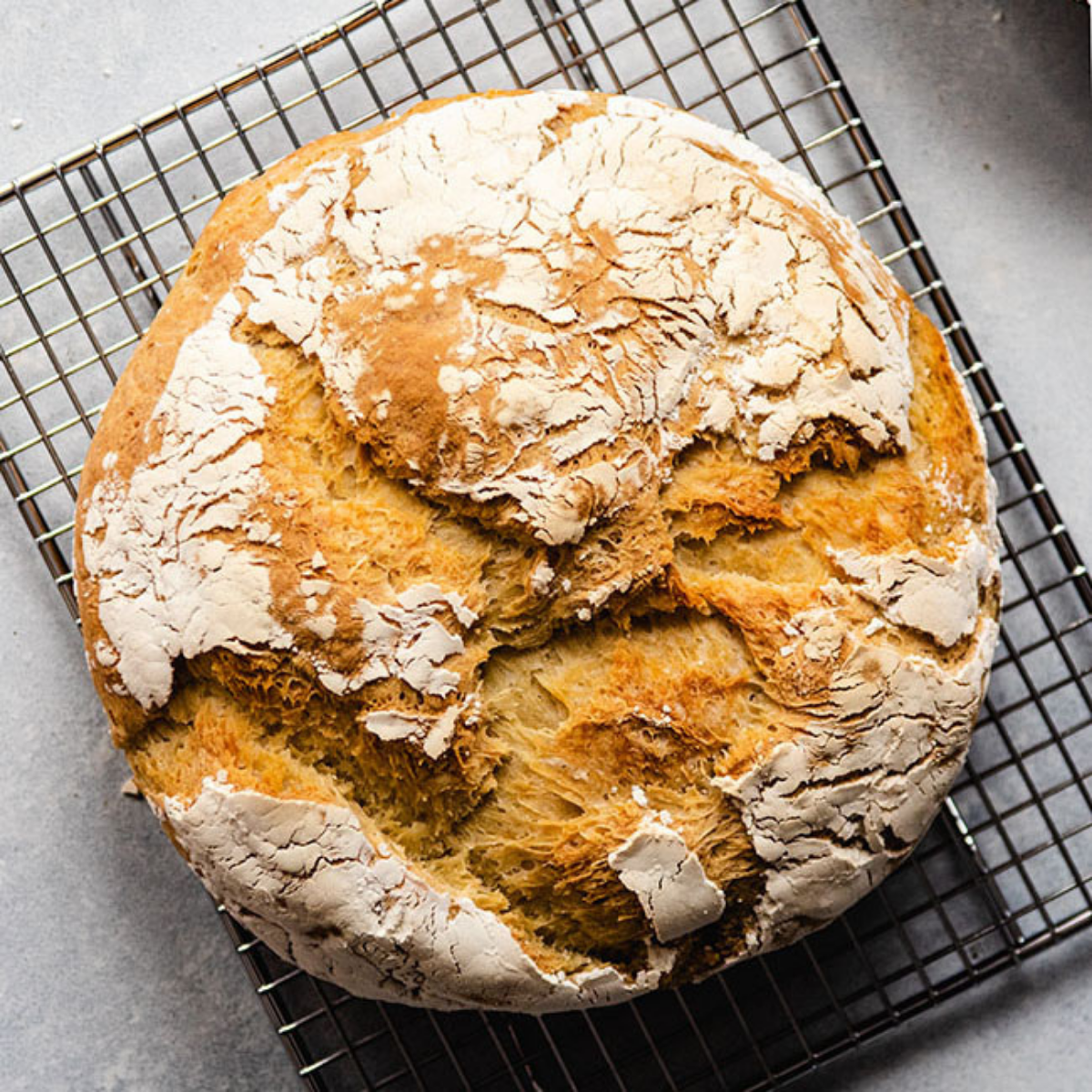
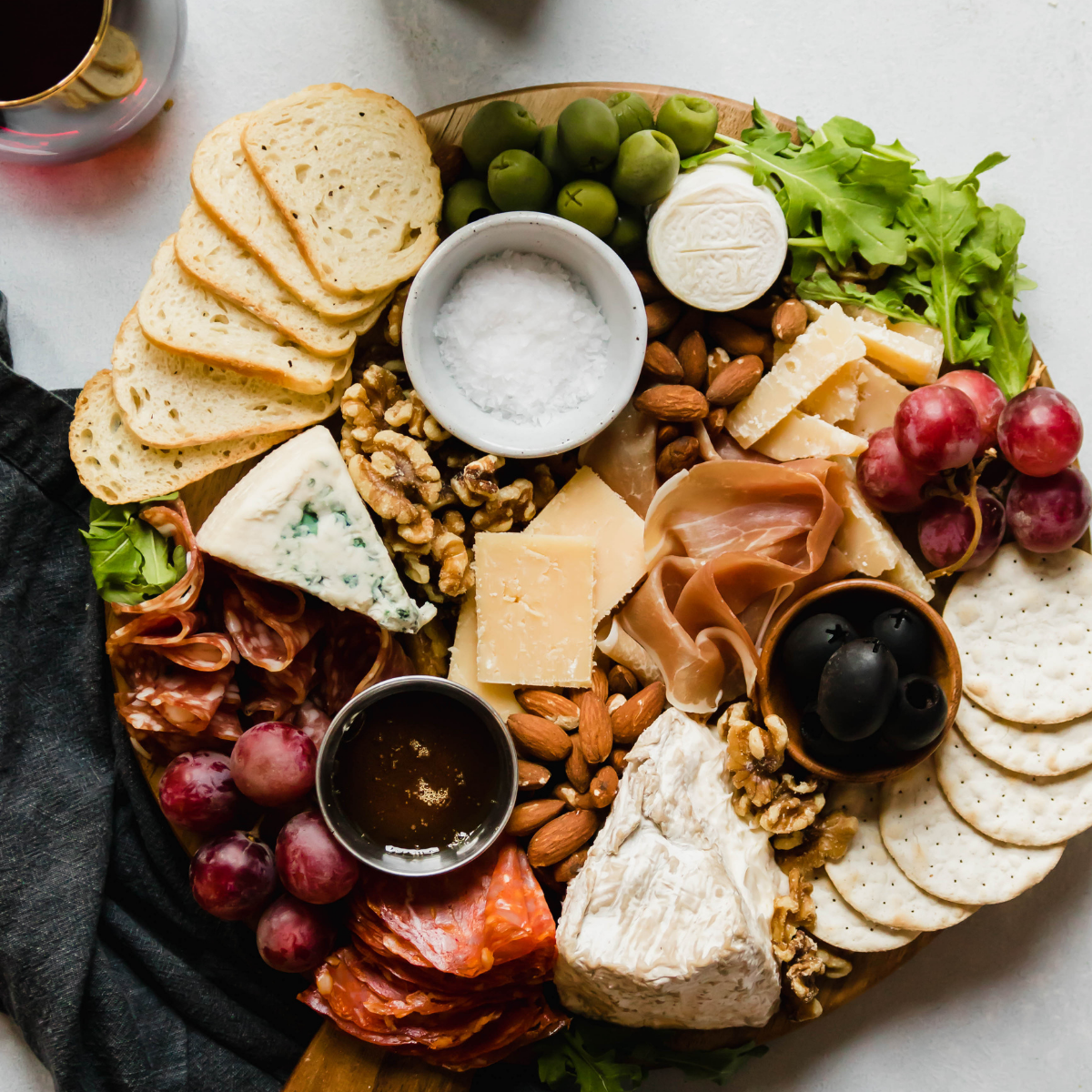

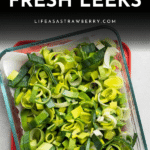

Jessie
I love meal prepping leeks with this method! I'll cut up 2-3 leeks on a Sunday, slice and wash them, and store them in the fridge all week for frittatas, scrambled eggs, pasta, you name it. When they're already washed and prepped and ready to go, it's super easy to throw them into all of my favorite dishes.
★★★★★